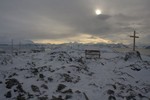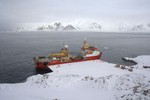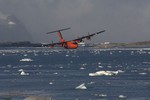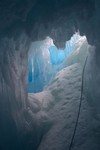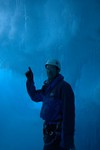In Stanley again
March 30th, 2007It’s quite strange being back in Stanley again – despite only having been here for four days on the way down, the town feels very familiar and there are still a lot of BAS people about so you’re always bumping into people you know. It still feels disconcertingly like the UK – the street furniture and road signs are all UK-style, and the food shops are full of British brands. My first morning in Stanley, however, was spent dealing with the Great British Bureaucracy – I needed a visitors permit stamped into my passport. Dave the Purser on the ship organises immigration – and for most people it was straightforward. However, for the ten of us who were staying in the Falklands as tourists there was a problem – travel insurance. The customs officer needed to see proof that we had insurance to cover medical evacuations in the event that we became seriously ill or injured during the time we weren’t covered by BAS’s insurance. This had been a saga in itself – it’s almost but not quite impossible to buy travel insurance if you haven’t been living in the UK for 12 months and your journey doesn’t begin or end in the UK. After a tip-off from a colleague I bought a policy before leaving Rothera from Travel Nation which doesn’t have those irritating residency requirements. Anyway, three of us trekked up to the Customs office and stood around for twenty minutes whilst a slightly bemused official read our policies and eventually issued us two-week visitor’s permits.
Anyway… yesterday we went to Volunteer Point, which despite being expensive (and boy is everything expensive in the Falklands!) is well worth it. We’d organised two Land Rovers and local guides to take us there, as the journey is quite difficult – firstly you drive for about an hour and a half along the gravel roads to the tiny settlement of Johnson’s Harbour, and then you drive ten miles across rough peaty moorland until you reach the nature reserve. This is a little neck of land with a long sandy beach on one side facing the sea, and a muddy lagoon on the other. On this small piece of land, perhaps half a mile long, there are Magellanic penguins (Jackasses, the locals call them, because they bray like a donkey) in their little burrows, and noisy, smelly colonies of both the small Gentoo penguins and the much larger King penguins. The Kings had chicks, too – small grey ones still huddling around their parents, and much older ones covered in a mass of brown fluffy down.
It’s a magical spot, particularly as the penguins are quite unconcerned at your presence and happily wander around mingling with the scruffy local sheep.
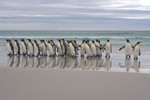
King Penguins on the beach at Volunteer Point
Lots of pictures of Stanley and Volunteer Point


